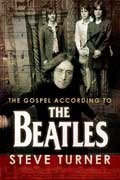
Looking for an alternative from the standard Yule music fare? Try these twelve classic gospel songs on for size. Use your favorite search engine to find reissue CDs, or maybe even the original vinyl, on which these songs can be found. Happy Holidays, everyone!
“Glory, Glory to the New Born King” - Angelic Gospel Singers (Gotham, 1950)
Philadelphia’s Angelic Gospel Singers, featuring Margaret Allison, hit it big in 1949 on their very first 78 rpm single, “Touch Me, Lord Jesus.” Riding high on their newfound popularity, they recorded “Glory, Glory to the New Born King” for Gotham the following year. Horace Clarence Boyer notes that the song became as popular in the African American community as “White Christmas” did in the white community. Even today, a gospel Christmas compilation without someone singing “Glory, Glory to the New Born King” is simply incomplete.
“O Holy Night” - Marion Williams (Savoy, 1959)
The legendary gospel soprano Marion Williams moved the Ward Singers up a little higher before stepping out on her own in 1958 to fashion the Stars of Faith from fellow members of the Wards aggregation. One year later, Marion and the Stars of Faith waxed a Christmas album for Savoy Records. On the album, Marion performs “O Holy Night” as a solo. While the entire song is a masterpiece, its finest moment comes at the composition’s emotional apex, when Marion launches one of her signature high-whoos, like a sonic rocket, heavenward.
“Christmas Morn” - Charles Watkins (Savoy, 1951)
Before Charles Watkins became a bishop, he was a gospel crooner, one of the smoothest male vocalists to ever grace the genre. His 1963 “Heartaches” was a gospel hit that would be covered by many artists, but 12 years prior, he recorded “Christmas Morn” for Savoy. “Christmas Morn” remains an obscure title, but that is unfortunate: the melody is every bit as unforgettable as Nat Cole’s take on Mel Torme’s “The Christmas Song.” Forget global warming: the polar ice cap began to melt when Watkins falsettoed “Merry Christmas to you” in the song’s final bars.
“Pretty Little Baby” - James Cleveland and the Cleveland Singers (Savoy, 1968)
A Christmas spiritual, sung slowly and with much gravity and passion by “King” James Cleveland, whose coarse, pious voice always seemed one beat away from a full-out cry. The Cleveland Singers increase and decrease in intensity in all the right places, making this one of Cleveland’s most perfect recordings. Given Cleveland’s prolific recording career spanning four decades, that says a lot.
“I’ll Be Home for Christmas” – Pilgrim Travelers (Specialty, 1953)
The Pilgrim Travelers were one of the finest a cappella gospel quartets of the Golden Era. They lent their voices to this popular Christmas song, which was as relevant during the Korean War as it was a decade earlier when sung about World War II soldiers missing loved ones at home during the holidays. The Travelers’ version, however, doesn’t seem nearly as optimistic about soldiers returning as did Bing Crosby’s 1943 classic, but instead seems to stoop under the weight and weariness of continued conflict. The steel guitar flourishes at the end, added presumably to brighten the arrangement, only thicken the fog of loneliness and despair.
“When Was Jesus Born” – Patterson Singers (United Artists, 1968)
The Patterson Singers were no strangers to Christmas songs, having performed a few for a special Christmas album produced in 1963 by Vee Jay Records. This recording, however, finds them across the ocean, in concert in Frankfort, West Germany, shouting this timeless spiritual at elite runner pace. The Pattersons’ rhythmic stutter during the litany of months at the composition’s center drives the audience into an understandable frenzy.
“White Christmas” – Vocalaires of Newport News, VA (Pinewood, early 1970s)
The Vocalaires male quartet, like the Ravens and Drifters before them, turn Bing Crosby’s zillion seller into a rousing, fun doo-wop. While the Ravens’ and Drifters’ recordings remain fairly faithful to the original, the Vocalaires sing the lyrics to a standard 50s doo-wop song structure, resplendent with playful booming bass lines and high harmonies. A tough-to-find recording, but well worth the search.
“Sweet Little Jesus Boy” – Wings over Jordan Choir (RCA Victor, 1948) &
“Sweet Little Jesus Boy” – Rev. Cleophus Robinson (Peacock, 1967)
Men and women of all races and creeds who grew up in the 1940s recall fondly the Wings over Jordan Sunday radio program, where they heard some of the most moving spiritual singing on the planet. Who better, then, to render Robert MacGimsey’s neo-spiritual than Rev. Glenn Settles’ Wings over Jordan? The Cleveland-based chorus sings the composition like a teary lullaby, with lovingly hushed harmonies.
Rev. Cleophus Robinson’s take on the composition two decades later, however, eschews the supplicant quietude and aims straight for the theme’s parallel to the plight of African Americans in the 1960s. Robinson’s gravitas on the line, “The world treat you mean, Lord/Treat me that way, too,” will raise the hair on the back of your neck.
“Jesus Christ, the Baby” – Six Trumpets feat. Maggie Ingram (Nashboro, 1961)
This Christmas gospel favorite introduced the sweet, girl-group soprano of Maggie Ingram. The Six Trumpets male quartet supporting Ingram chant “baby” (as in Jesus) in the background, though it sounds for all the world as if they are chanting “Maggie.” Ingram went on to form a successful family group called the Ingramettes, but she never again replicated the charmingly graceful performance of her debut.
“Follow the Star” – Edwin Hawkins, feat. Richard Smallwood (Birthright, 1985)
Richard Smallwood wrote “Follow the Star” and accompanied the Hawkins Family on their performance of it for their much sought-after 1985 Christmas album. “Follow the Star” features a chorus of beautiful, tight harmonies, crisp and invigorating as a starry winter night. A master of the expansive, emotional finish, Smallwood writes a real heart-wrenching coda for “Follow the Star.” It alone is guaranteed to elicit sighs of wonder and soul satisfaction.
“Joy to the World” – Stars of Black Nativity (Vee Jay, 1962)
Alex Bradford and the Bradford Singers, Marion Williams and the Stars of Faith, and Princess Stewart served as the original cast for Langston Hughes’ captivating interpretation of the Nativity. Like the Christmas Star, Black Nativity would soon be witnessed and marveled at the world over. “Joy to the World” was performed for the production by Professor Bradford and his Singers. It was a stroke of genius: the group’s over-the-top effervescence was perfect for this musical explosion of exaltation.
“Silent Night” – Mahalia Jackson (Apollo, 1950)
Franz Gruber and Josef Mohr wrote this Christmas chestnut in 1818, but when Mahalia Jackson wrapped her gospel tonsils around it 132 years later, you’d swear the two Austrians wrote the song expressly for her. Millions upon millions have crooned this carol, but few with the straightforward, heartwarming religious intensity of ‘Halie.
Copyright 2006 by Robert M. Marovich
Bob Marovich is a gospel music historian, radio announcer, and author. In its seventh season, Bob’s “Gospel Memories” program of vintage black gospel music and artist interviews airs live first Sundays from 3:00 to 7:30 a.m. on Chicago’s WLUW 88.7 FM, and streams live at http://www.wluw.org/. Snippets of recent broadcasts can be heard at http://www.gospelmemories.com/. Bob is also editor of The Black Gospel Blog: http://blackgospel.blogspot.com/. He can be reached at bob@gospelmemories.com.










